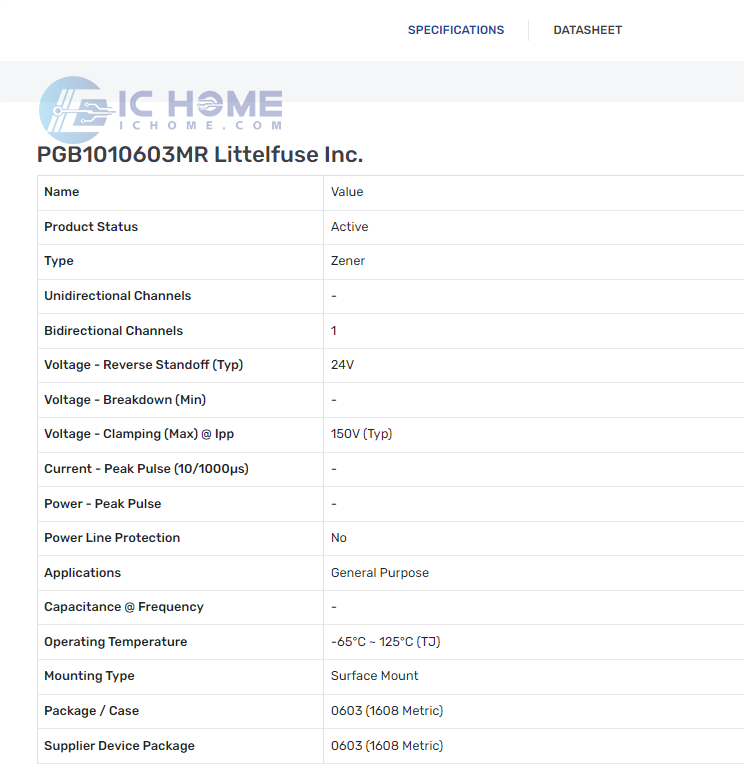How to Read Datasheets and Certifications for Electronic Components Buyers Guide
In the electronics industry, a component’s datasheet is much more than just a document — it’s a critical source of truth that can make or break a project. Yet, many procurement professionals, junior engineers, and even seasoned buyers often skim through datasheets without fully grasping all the parameters and certification markings embedded within. In today’s competitive market, understanding how to read a datasheet properly is an essential skill that helps avoid costly mistakes, ensures compliance, and supports reliable supply chain decisions.
Why Datasheets Matter
A datasheet provides detailed technical specifications about an electronic component. It describes its electrical, mechanical, thermal, and environmental limits. However, beyond the technical numbers, a datasheet also includes essential certification information that verifies the component’s compliance with global safety and quality standards. Ignoring these sections can result in purchasing parts that fail regulatory audits, pose safety risks, or are incompatible with specific applications.
Key Sections to Focus On
When you open a datasheet, start by scanning the absolute maximum ratings — these define the safe operating limits for voltage, current, and temperature. Exceeding these ratings can cause permanent damage or unexpected failure. Next, check the electrical characteristics, typically presented under ‘typical’, ‘minimum’, and ‘maximum’ conditions. This section tells you how the component behaves under various conditions — vital for ensuring circuit stability.
The mechanical dimensions section is equally important for PCB layout and assembly. Mismatched dimensions can lead to placement errors, soldering issues, or mechanical stress on the board.
For example, you can refer to the PGB1010603MR to see how its parameters and datasheet details illustrate these key points.

Understanding Certification Parameters
A frequently overlooked part of datasheets is the certifications table or compliance statement. Depending on your market and end-use, you should know whether the component complies with:
-
RoHS (Restriction of Hazardous Substances)
Indicates the part is free from certain hazardous materials like lead or mercury. -
REACH (Registration, Evaluation, Authorisation and Restriction of Chemicals)
Confirms the product meets EU chemical safety standards. -
UL or CSA Certification
Ensures the component has passed safety testing by recognized third-party laboratories. -
AEC-Q100 or Q200
Automotive-grade qualifications that signal suitability for harsh environments.
When sourcing, matching certification standards with your final product’s compliance requirements is crucial — especially for industries like automotive, medical devices, or consumer electronics.
Tips for Reading Between the Lines
While datasheets provide extensive detail, they don’t always tell the whole story. For example, parameters are often measured under ideal lab conditions. Real-world application conditions may differ — so always compare the test conditions listed with your actual operating environment.
Also, pay attention to footnotes and graphs. Small footnotes often clarify exceptions, conditions, or tolerances that could impact performance. Graphs can reveal trends like temperature drift or derating curves that static numbers cannot.
How to Verify the Datasheet’s Validity
A hidden pitfall in component sourcing is outdated datasheets. Always check the revision number and release date on the first or last page. Manufacturers sometimes update specifications or discontinue older versions, which can dramatically affect compatibility and compliance.
For critical applications, cross-reference the datasheet with the manufacturer’s official website or authorized distributors like ICHOME Components. This ensures you’re using the latest data and sourcing authentic parts.
Bridging Theory and Practice
Procurement and engineering teams should collaborate when reviewing datasheets. Engineers can interpret complex technical parameters, while buyers ensure that certifications align with market requirements. Building a checklist that covers maximum ratings, core performance specs, mechanical drawings, and compliance marks can help streamline the vetting process.
At ICHOME, we often advise clients to keep a shared knowledge base of commonly used component datasheets, annotated with project-specific notes and lessons learned from past sourcing decisions. This turns static datasheets into living reference tools that continuously add value.
Conclusion
In an era of shrinking design cycles and tightening compliance rules, learning how to truly understand a datasheet and its certification information gives you an edge. It reduces the risk of product recalls, avoids costly redesigns, and keeps your supply chain resilient.
Next time you download a datasheet, don’t treat it as a formality — think of it as your project’s silent partner. Take the time to read, question, and verify. It’s a habit that separates excellent component buyers from the rest.
ICHOME — your trusted partner for verified, high-quality electronic parts.




